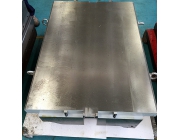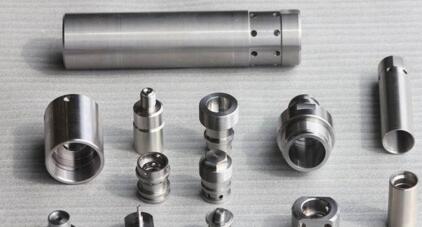

Longmen processing 02

Longmen processing 03

Longmen processing 04

Longmen processing 05

Longmen processing 06

Longmen processing 07

Longmen processing 08

Longmen processing 09

Longmen processing 01

Processing center of small proc

Processing center of small proc

Processing center of small proc

Processing center of small proc

Processing center of small proc

Processing center of small proc

Processing center of small proc


Hangzhou precision parts processing manufacturers for you to introduce the features and applications of common metals in 10 kinds of machining:
1, 45— — high quality carbon structural steel is the most commonly used medium carbon quenched and tempered steel.
The most commonly used medium carbon quenched and tempered steel has good comprehensive mechanical properties, low hardenability, and easy to crack when water quenched. Small parts should be treated with quenching and tempering, and large parts should be treated with normalizing. It is mainly used for manufacturing high strength moving parts, such as turbine impeller and compressor piston. Shaft, gear, rack, worm and so on. The welds should be preheated before welding, and stress relieving after welding.
2, Q235A (A3 steel) — — the most commonly used carbon structural steel.
It has high plasticity, toughness and welding properties, cold stamping properties, and certain strength and good cold bending properties. Widely used in general requirements of parts and welding structure. Such as less tensile rod, connecting rod, pin, shaft, screw, nut, ring, bracket, frame, building structure, bridge and so on.
 3, 40Cr— — one of the most widely used steels is alloy structural steel.
3, 40Cr— — one of the most widely used steels is alloy structural steel.
After quenched and tempered, it has good comprehensive mechanical properties, low temperature impact toughness and low notch sensitivity, good hardenability and high fatigue strength when oil is cold. When water is cold, the parts of complex shape are easy to produce cracks, cold bending plasticity is medium, tempering or quenched and quenched are good, but the weldability is bad. It is easy to produce cracks. It should be preheated to 100~150 degrees before welding. It is usually used in quenched and tempered condition. It can also be carbonitriding and high frequency surface hardening. After quenched and tempered, it is used to make parts of medium speed and medium load, such as machine gear, shaft, worm, spline shaft, and thimble sleeve, etc., and are quenched and quenched for high hardness and wear-resistant parts, such as gear, shaft, spindle, crankshaft, shaft, sleeve, pin, screw nut, and intake valve, etc. Parts, such as oil pump rotor, slide block, gear, spindle, ring, etc. after quenching and tempering, are used to make heavy load, low impact and wear-resistant parts, such as worm, spindle, shaft, and ring after quenching and low temperature tempering. High transmission parts such as shafts and gears.
4, HT150— — grey cast iron is mainly used in gear box, machine tool bed, box, hydraulic cylinder, pump body, body, flywheel, cylinder head, belt wheel, bearing cover and so on,
5, 35— — commonly used materials for various standard parts and fasteners
The strength is suitable, the plasticity is good, the cold plasticity is high, and the weldability is acceptable. The local upsetting and drawing can be made in the cold state. Low hardenability, use of normalizing or quenched and tempered, suitable for making small section parts, which can bear large load parts, such as crankshaft, lever, connecting rod, hook and ring, and all kinds of standard parts and fasteners
6, 65Mn— — common spring steel is mainly used for small size, round spring, cushion spring, spring spring, spring ring, valve spring, clutch spring, brake spring, cold coil spring, spring coil and so on.
7, 0Cr18Ni9— — the most commonly used stainless steel (American steel number 304, Japan steel number SUS304)
As the most widely used stainless steel, such as food equipment, general chemical equipment, originally used for industrial equipment.
8, Cr12— — commonly used cold die steel (American steel D3, Japan steel SKD1)
Cr12 steel is a widely used cold work die steel. It belongs to the high carbon and high chromium type Laixing steel. The steel has good hardenability and good wear resistance, because the carbon content of Cr12 steel is up to 2.3%, so the impact toughness is poor, brittle crack, and easy to form the uneven eutectic carbide. Because of the good wear resistance, Cr12 steel is used to manufacture the cold punch die, punch, and blanking die with low impact load and high wear resistance. Cold heading die, cold extrusion die punch and die, drill bushing, gauge, drawing die, pressing die, rubbing wire plate, drawing die, and cold pressing die for powder metallurgy, etc.
9, DC53— — commonly used cold work die steel imported from Japan
High strength and toughness cold working die steel, Japan Datong special steel (strain) manufacturer steel number. After high temperature tempering, it has high hardness, high toughness and good wire cutting performance. For precision cold stamping die, drawing die, rolling die, cold punching die, punch and so on 10, SM45— — ordinary carbon plastic mold steel (Japan steel S45C)
10, DCCr12MoV— — wear-resistant chromium steel
The carbon content of domestic Cr12 steel is low, and Mo and V are added, the non uniformity of carbides is improved. MO can reduce carbide segregation and increase hardenability. V can refine grain and increase toughness. The steel has high hardenability, the section can be completely quenched under 400mm, and can still maintain good hardness and wear resistance at 300~400 C, higher toughness and quenching than Cr12. It has small change in volume, high wear resistance and good comprehensive mechanical properties. So we can make various moulds with large sections and complex shapes, such as ordinary drawing die, punch die, punch die, blanking die, edge die, roller die, drawing die, cold extrusion die, cold cut scissors, circular saw, standard tools, measuring tools and so on.
